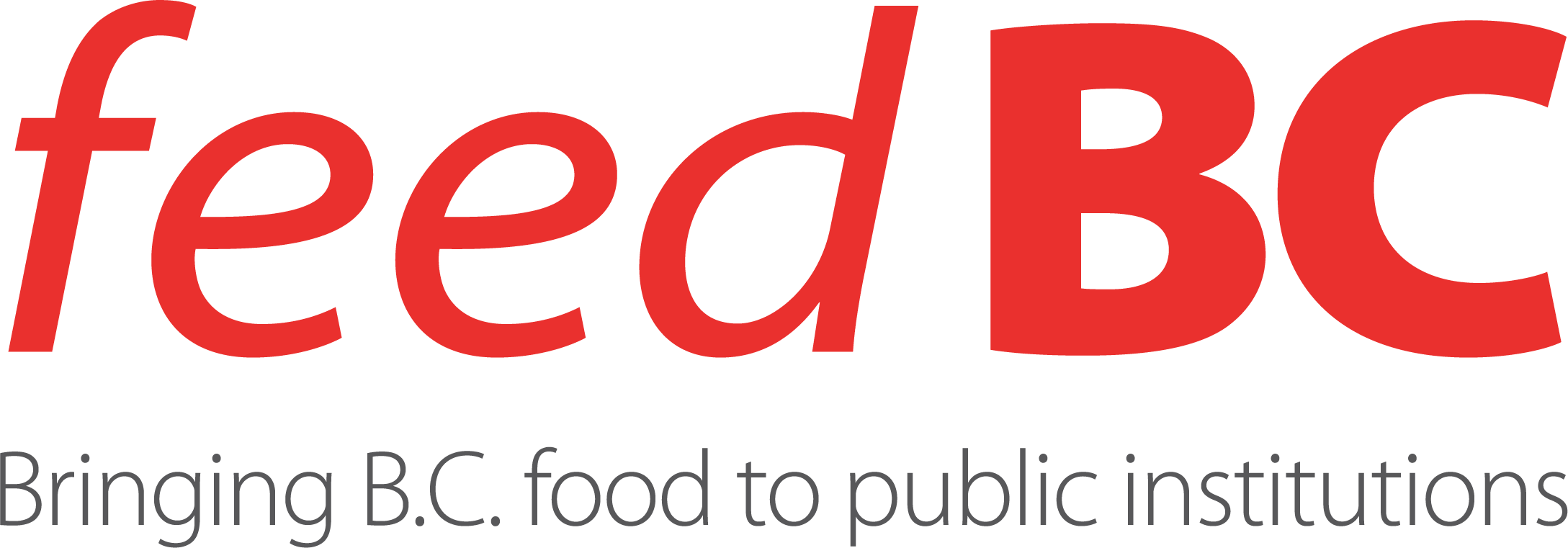Tips for Producers and Processors

View or download the full PDF: Feed BC Tips for Selling to Commercial and Institutional Buyers
Tips for Getting Ready to Sell to Commercial & Institutional Buyers
Are you a B.C. producer or processor interested in selling your B.C. products to commercial and institutional buyers? Getting ready to sell to these markets takes substantial research and preparation to understand each of their unique dynamics and requirements. Before you decide to list in the directory, use these tips to understand the common requirements of buyers, and help you get ready to successfully sell to commercial and institutional buyers.
Are your business operations ready for this market?
Selling to commercial and institutional markets can be a rewarding yet complex process. Each type of buyer is unique in their product needs, and specific types of buyers have different requirements—such as how they purchase or serving requirements for prepared food. Generally, food businesses that sell to this sector need to:
- Maintain consistent volumes and quality that meet a high standard of food safety, traceability, production, and processing standards;
- Be ready to sell to regional or broadline distributors or other partners in the market sector;
- Be prepared to sell at wholesale prices according to the buyer category. Margins may be lower, yet volumes tend to be higher with opportunities for cost efficiencies;
- Be prepared to be flexible with pricing; for example longer payment terms or ‘cost’ instead of margin pricing models.
Have you identified key supply chain partners to access your target market?
There are multiple types of buyers within the institutional and commercial markets, which can include:
Institutional: Buyers for facilities such as health care, post-secondary and correctional facilities most commonly purchase large volumes at wholesale prices sourced through distributors, Group Purchasing Organizations (GPO) and/or contracted foodservice companies. Institutional buyers will have specific product specifications (for example packaging size, volume case lots, allergens) that are different to the retail market.
Retail: Retail outlets vary in size and scale—smaller, independent groceries are more willing to do direct sales, while other national or subsidiary outlets have more complex requirements that require distributors or specific contracts with the seller. Retail buyers generally seek a 35-40% margin, which can vary with factors purchasing product directly or through an intermediary, what long term contracts are in place, exclusivity deals and promotional campaigns.
Distributors: Many institutional and retail buyers rely on distributors to stock and deliver products to their facilities. Distributors may specialize in sales channels, such as foodservice or retail, product focus (e.g. natural foods, produce, seafood, etc.), or scale (broadline versus regional). Many distributors stock thousands of products, and while typically require an average sales margin of 20-30%, they will have their own programs, fees, and margin requirements.
Since they have comprehensive, category product listings with multiple options, products that are unique or new to the market and show clear, differentiated value have an advantage. Approaching a distributor with existing or potential customers will demonstrate market viability and demand that can in turn drive new business to distributors. However, being listed with a distributor does not guarantee sales or demand from retailers or institutions, and you will still need to actively market your product.
Brokers: Brokers are third party agents who coordinate and manage the relationship between producers and distributors/retailers. They may represent any number of producers, selling a variety of product lines from multiple brands to a portfolio of retailers. Brokers generally charge a 5–8% commission and often a monthly fee in exchange for working their connections and negotiating sales of your products to harder-to-reach retailers.
Other Supply Chain Partners: Include Group Purchasing Organizations (GPO’s), different types of foodservice operators, and co-packers.
Do you understand the needs of your potential buyers?
Since different commercial and institutional buyers have different needs, not all products are relevant to all buyers (i.e., the needs of a university cafeteria will be different than the needs of small grocery store). Before attempting to sell within this market sector, make sure you clearly understand the specific needs of your buyer, their partners and how they differ from other sales channels.
- Research and compare the needs of the buyer segment to determine how your product and company meets the requirements. What unique value and solution(s) does your product provide to your buyers and consumers?
- For example: Your product helps institutions reduce labour cost or the need for skilled labour. Such as, ready to heat, pre-portioned mashed potatoes; while more expensive this product will save significant labour costs and reduce kitchen infrastructure requirements in the health sector.
- Your product helps foodservice operators achieve objectives such as specific packaging or size requirements (for example individual portioned yogurt) and/or adapt to industry trends (e.g. gluten free or plant-based protein options).
- You can adapt your processing or product format to meet these specifics that is cost-effective for both parties.
Industry or marketing associations, and specialized tradeshows can help promote your product. Agriculture and food industry associations may provide valuable insights specific to your category of food product. The BC Ministry of Agriculture and Food offers events and educational opportunities to connect with institutional and commercial buyers.
Do you have a comprehensive business plan with a well-developed costing and marketing strategy?
As the foundation for the expansion of product channels and business growth, defining a clear, strategic business plan with goals specific and appropriate to the market sector is essential. Compiling your research and knowledge of your industry with targeted sales channels, specific buyer requirements, understanding of competitors, as well as a marketing and growth strategy into one cohesive business plan is a powerful tool to promote your food company and products.
- A solid marketing plan will help you define and communicate your competitive advantage to your targeted buyers: such as how your product meets their needs, and your plan to attract and retain customers to drive sales—and identify the resources you need to achieve these elements. It will also help you calculate your pricing strategy and how you will promote and differentiate your product.
- The best business relationships are built on a shared understanding of success—which takes time to develop. Discuss volumes and costs with potential distributors and other types of buyers, and be clear on the targets for price points, sales volumes and your investments required to meet these numbers. Understanding your ‘cost of goods’ and direct labour costs is essential to determine product feasibility when considering the margins that will be deducted at each stage of the sales process.
- Industry or marketing associations, and specialized tradeshows can help promote your product. The BC Ministry of Agriculture and Food offers events and educational opportunities to connect with institutional and commercial buyers.
Are you able to scale to demand?
The institutional and commercial market can provide the opportunity to sell large quantities to a few buyers, with the potential to reduce labour and delivery costs. Maintaining consistent quality without a gap in supply and delivery is critical. As demand for your product grows, you will need to assess your production capacity to reliably meet demand at scale:
- For smaller primary producers (fruit and vegetable) this might mean exploring aggregation opportunities with industry associations or value chain partners,
- For smaller processors, it might mean working in a shared use facility like a food hub, commissary kitchen or working with an industry partner such as a co-packer to extend your production capacity,
- Your business may need to adapt infrastructure and production to meet the volumes and specifications of buyers.
Do you meet the food safety standards and requirements of your potential buyer?
The ability to serve safe food according to municipal, provincial, and federal food safety regulations is important in every operation. However, these standards are paramount when providing food to facilities that serve communities with compromised immune systems such as the elderly and infirmed in health care. Most broadline distributors and food services require food safety and industry certifications to carry your product. Depending on the produce or product offered, there are different food safety programs that can help you meet the specific facilities’ needs.
Many institutions have their own procurement and contract guidelines—many of which are available on their websites—and it is important to check and familiarize yourself with these requirements. For example, B.C. Kindergarten to Grade 12 schools have nutritional guidelines that must be met.
Many buyers require certifications that designate a level of industry standard food safety, such as:
- HACCP (Hazard Analysis Critical Control Points): Many buyers require processed foods to be produced in a HACCP-approved facility. HACCP is an internationally recognized method of identifying and managing food safety related risk and provides assurance that a food safety program is well managed.
- Good Agricultural Practices (GAP): For primary agricultural products, to ensure safe fruit and vegetable production, harvesting, handling and brokerage.
Do you meet labelling and packaging requirements?
Canada has strict labelling requirements that must be followed when selling food and beverage products. These requirements are specific to the market you are selling to (e.g. retail, restaurants, foodservice or wholesale), where you are selling the product (i.e. within B.C. or beyond), the type of product (e.g. alcoholic beverages has specific and additional labelling requirements) and how it is packaged. A food product label must include information such as a nutritional chart, allergens, ingredients, and a best before date.
Additional labelling and packaging requirements such as a Traceability Plan, UPC barcodes (Universal Product Code), and ECC Net registry (a national food product database for consumers) are generally a prerequisite for distributors and Group Purchasing Organizations (GPO). These enable product management through identification, traceability and recall by including information such as product origin, location, contact, agricultural and manufacturing practices, and company details. Understanding buyer’s requirements is essential to product viability, as you may need to adapt your packaging or product portioning to meet specific needs. For example, if you sell an individual retail item, this may need to be sold in bulk volumes, or you may need to provide a specific size of product for pre-portioned, ready to serve items.

